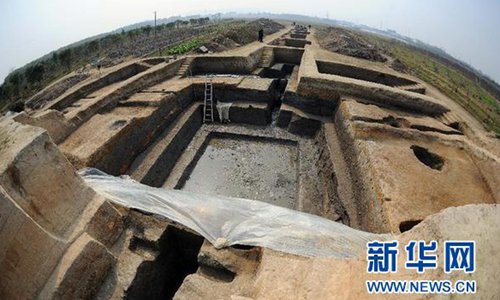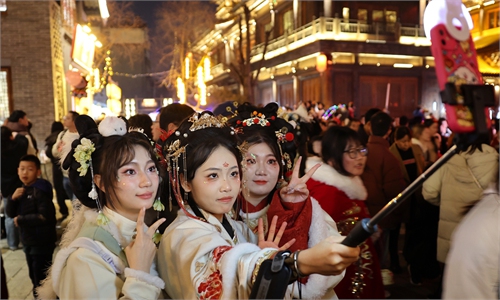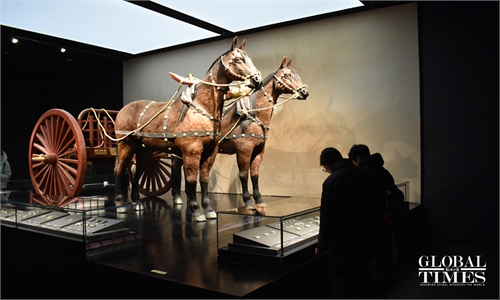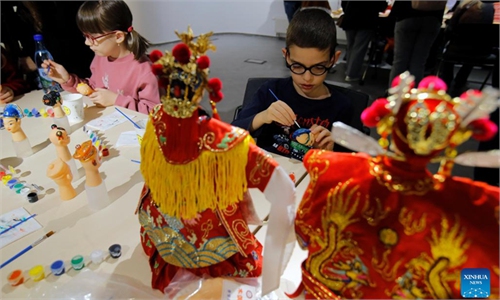ARTS / CULTURE & LEISURE
Best-preserved prehistoric ‘power symbol’ made of stone discovered in Jiangsu Province

The liangzhu site in Hangzhou, Zhejiang Province Photo:
Ranging around 36 centimeters in width, a Neolithic Age stone yue was recently discovered in Changzhou city, East China's Jiangsu Province. Stone yue were commonly used by ancient people for agricultural and sacrificial activities.The discovered stone yue is so far the most well-preserved artifact of its kind discovered in China. It was found as a burial object in a tomb close to its owner's head.
Unlike many previously discovered stone yue pieces, the relic was interestingly pierced with a hole that may mean it was once worn as an accessory, transforming the stone yue's function.
Archaeological expert Qu Fulin told the Global Times that yue, as a symbol of power, first originated from the blade of an axe, and as time went on they started to be engraved with patterns and totems. Qu said that these aesthetic details were "major indicators" showing the artifact was also a "cultural-socio symbol."
"In prehistoric time, people used the object as a weapon. It was also an object represents one's prestigious social background since it symbolized 'power' and 'majesty,'" Qu told the Global Times.
The tomb where the stone yue was discovered also produced other artifacts such as axes and knives made of stone. Several remains of the lower jaws of pigs were also unearthed from the tomb.
Li Moran, a lead archaeologist to the project and a research fellow at the Institute of Archaeology CASS, said that the discovered stone yue relics date back to "6,000 years ago."
Yue were not just made from stone, similar pieces made of jade and bronze have also been unearthed before at sites such as the Liangzhu site in Hangzhou, Zhejiang Province.



